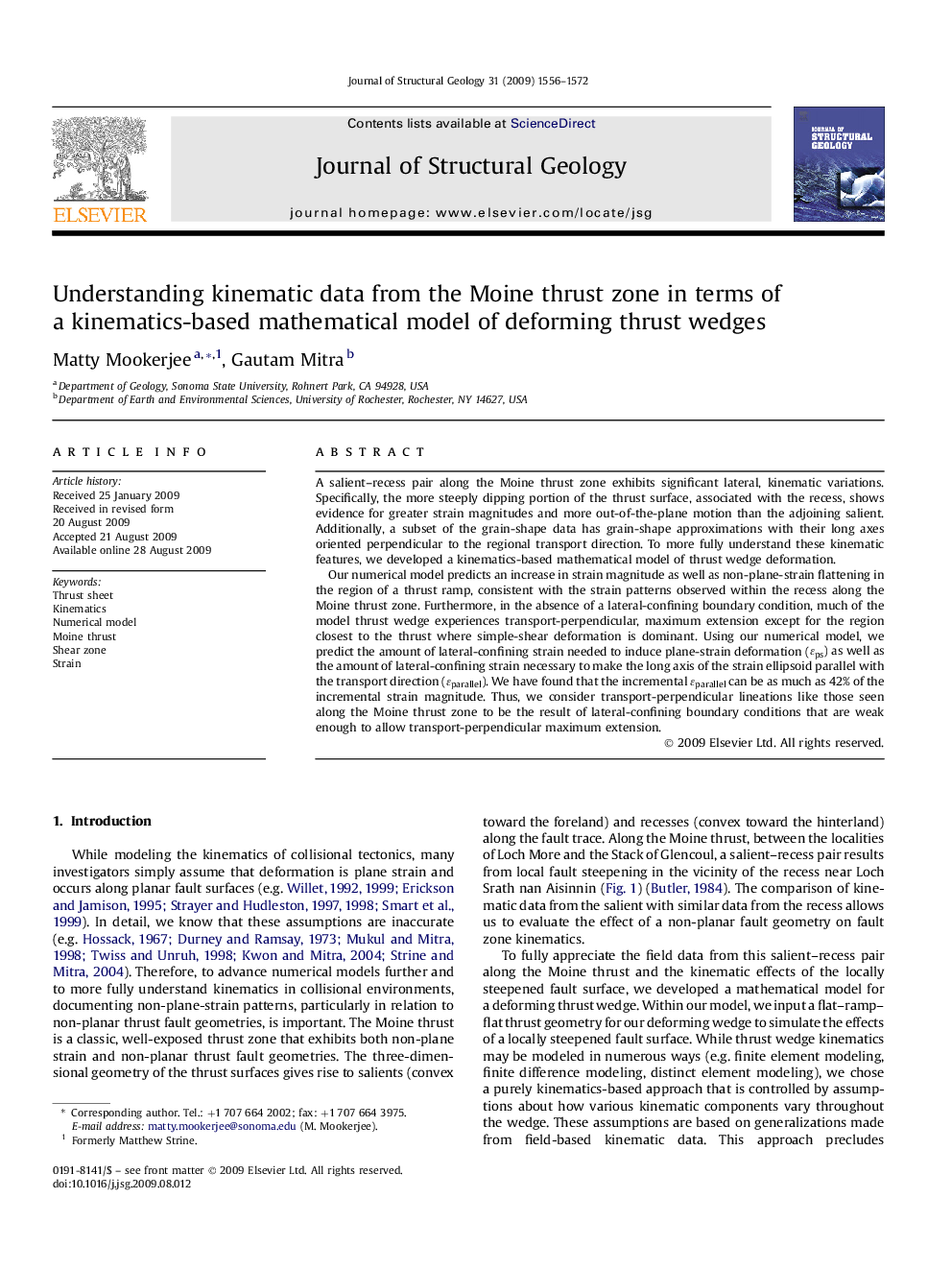| Article ID | Journal | Published Year | Pages | File Type |
|---|---|---|---|---|
| 4733726 | Journal of Structural Geology | 2009 | 17 Pages |
A salient–recess pair along the Moine thrust zone exhibits significant lateral, kinematic variations. Specifically, the more steeply dipping portion of the thrust surface, associated with the recess, shows evidence for greater strain magnitudes and more out-of-the-plane motion than the adjoining salient. Additionally, a subset of the grain-shape data has grain-shape approximations with their long axes oriented perpendicular to the regional transport direction. To more fully understand these kinematic features, we developed a kinematics-based mathematical model of thrust wedge deformation.Our numerical model predicts an increase in strain magnitude as well as non-plane-strain flattening in the region of a thrust ramp, consistent with the strain patterns observed within the recess along the Moine thrust zone. Furthermore, in the absence of a lateral-confining boundary condition, much of the model thrust wedge experiences transport-perpendicular, maximum extension except for the region closest to the thrust where simple-shear deformation is dominant. Using our numerical model, we predict the amount of lateral-confining strain needed to induce plane-strain deformation (ɛps) as well as the amount of lateral-confining strain necessary to make the long axis of the strain ellipsoid parallel with the transport direction (ɛparallel). We have found that the incremental ɛparallel can be as much as 42% of the incremental strain magnitude. Thus, we consider transport-perpendicular lineations like those seen along the Moine thrust zone to be the result of lateral-confining boundary conditions that are weak enough to allow transport-perpendicular maximum extension.
